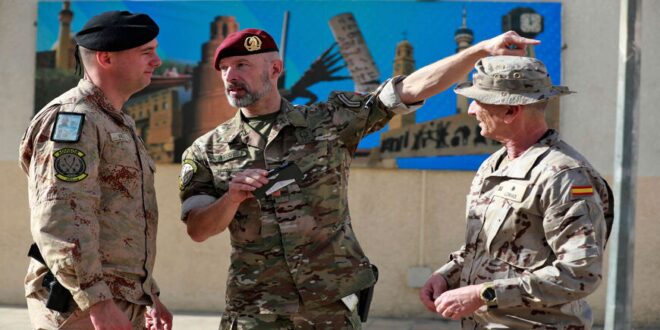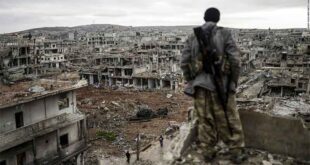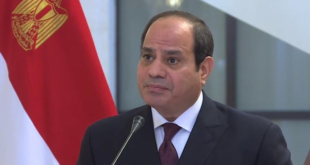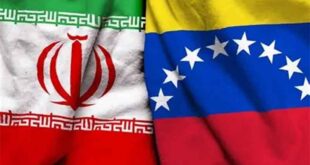Iraqi security forces have captured and killed a number of key Islamic State facilitators and others in the past month amid a US mission transition and concerns over coordination.
Iraqi security forces continued their operations against Islamic State (IS) cells and sources of funding in December with a number of captures and killings as the US “combat mission” against IS in the country drew to an end.
The US combat mission is due to officially end Dec. 31. Military advisers will remain in Iraq on bases in Anbar, Erbil and Baghdad.
Iraqi military intelligence reportedly captured a man near Ramadi in Iraq’s Anbar province who was allegedly responsible for collecting “zakat” from shepherds, according to a Dec. 21 tweet by the government-linked Iraqi Security Media Cell.
Zakat is a religious obligation in Islam to donate a certain part of one’s wealth to charitable causes. Few Muslim countries enforce zakat taxation, but IS established a specific administrative department, Diwan al-Zakat wa al-Sadaqat, for this purpose when it still controlled a significant amount of territory between Iraq and Syria.
Iraq declared victory against IS in the country in December 2017, while IS lost its last territory across the border in Syria — where many Iraqi IS fighters fled after being pushed out of their home country — in early 2019.
The last two cities to be retaken by Iraqi security forces from IS were Qaim and Rawa in Iraq’s western Anbar region along the border with Syria.
Iraqi security and counterterrorism expert Fadhil Abu Ragheef announced via Twitter Dec. 10 that Suhaib Hamid Dawood al-Zawi, son of former leader of al-Qaeda in Iraq Abu Omar al-Baghdadi, had been killed in Anbar.
Ragheef noted that this operation had also been carried out by the military intelligence and that Zawi had been killed north of Rutba in the Qaim desert area.
Abu Omar al-Baghdadi’s real name was Hamid Dawood Muhammad Khalil al-Zawi; he was born in the village of al-Zawiyah, close to Haditha in Anbar region.
He was the emir of the “Islamic State of Iraq” at the time of his killing by a joint US and Iraqi forces’ operation southwest of Tikrit in 2010 and was reportedly able to be tracked down only after the capture of the “wali” (governor) of Baghdad at that time, Manaf al-Rawi, who was arrested in 2010.
He was succeeded by Abu Bakr al-Baghdadi, who would become the “caliph” of the Islamic State of Iraq and Syria. The group later shortened its name to the Islamic State (IS).
Captures of al-Qaeda and IS commanders have often proved more useful for Iraq than their “elimination.”
In response to questions about details of the operation that resulted in the killing of Zawi in Anbar, Ragheef told this journalist Dec. 12 in Baghdad that the Iraqi intelligence services had been following Zawi for a week prior to targeting him and that it is believed but not certain that the current IS governor for Anbar had been killed with him.
On Dec. 16, the Twitter account of the Special Operation Joint Task Force – Levant reported that the Counterterrorism Directorate of the Kurdistan Region of Iraq had “conducted operations in al-Zaytun area of Erbil, Iraq, which resulted in the capture of two [IS arms smugglers].”
A US Department of Defense Office of Inspector General report issued Nov. 4 notably warned, however, “The Iraqi Security Forces demonstrated poor operational security, a lack of reliable information on operations, complacency and poor air strike coordination and control” in the period from July 1 to Sept. 30.
It also noted that, on the other side of Iraq’s border in an area of northeastern Syria under the control of the US-backed Kurdish-led Syrian Democratic Forces (SDF), “[The SDF] independently conducted only human intelligence gathering, relying on the Coalition for other intelligence capabilities. The SDF, with Coalition support, continued [to] improve security at detention facilities holding ISIS fighters, but CJTF-OIR reported that conditions remained substandard, adding to the threat of breakouts.”
There was an alleged attempted jailbreak in November of facilities run by the SDF with many IS detainees inside.
As of the end of last year, the SDF reportedly were holding at least 10,000 IS prisoners in approximately 14 detention centers, including thousands of Iraqi nationals.
In recent months, there have been many killings of Iraqi nationals in the massive al-Hol camp in SDF territory for those suspected of being linked to IS members as well.
And while arrests of alleged IS commanders and facilitators do continue, some analysts also see reduced effectiveness of Iraq’s anti-IS operations in recent months.
Regional security analyst Alex Almeida on Dec. 20 noted on Twitter, “About five months ago in early Q3 2021 I started detecting a decline in the effectiveness of ISF [Iraqi Security Operations] clearance ops – not only routine ‘for show’ Fed Pol [Federal Police] and IA [Iraqi Army] ops but Iraqi CTS [Counterterrorism Services] and Kurdish SOF [Special Operations Forces] ops that usually benefit from more intensive” US-led anti-IS international coalition enabling and support.
He continued, “Now we are seeing more ops concluding without any reported insurgent captures/body finds” and that “insurgents usually have time to displace/scatter” prior to Iraqi air force taking effective action against them.
Iraqi military operations at times consist of large convoys of vehicles in the desert with much in the way of photo opportunities but little chance of catching insurgents unaware.
Whether fewer “captures/body finds” is due to a reduced presence of IS in the country or a worrying trend of reduced effectiveness will be seen in the future.
For now, attempts are being made to address persistent issues with security gaps in territory disputed between the central government and the Kurdistan Region of Iraq, widely seen as one of the major reasons why IS cells are able to continue operating in the country.
 Eurasia Press & News
Eurasia Press & News



